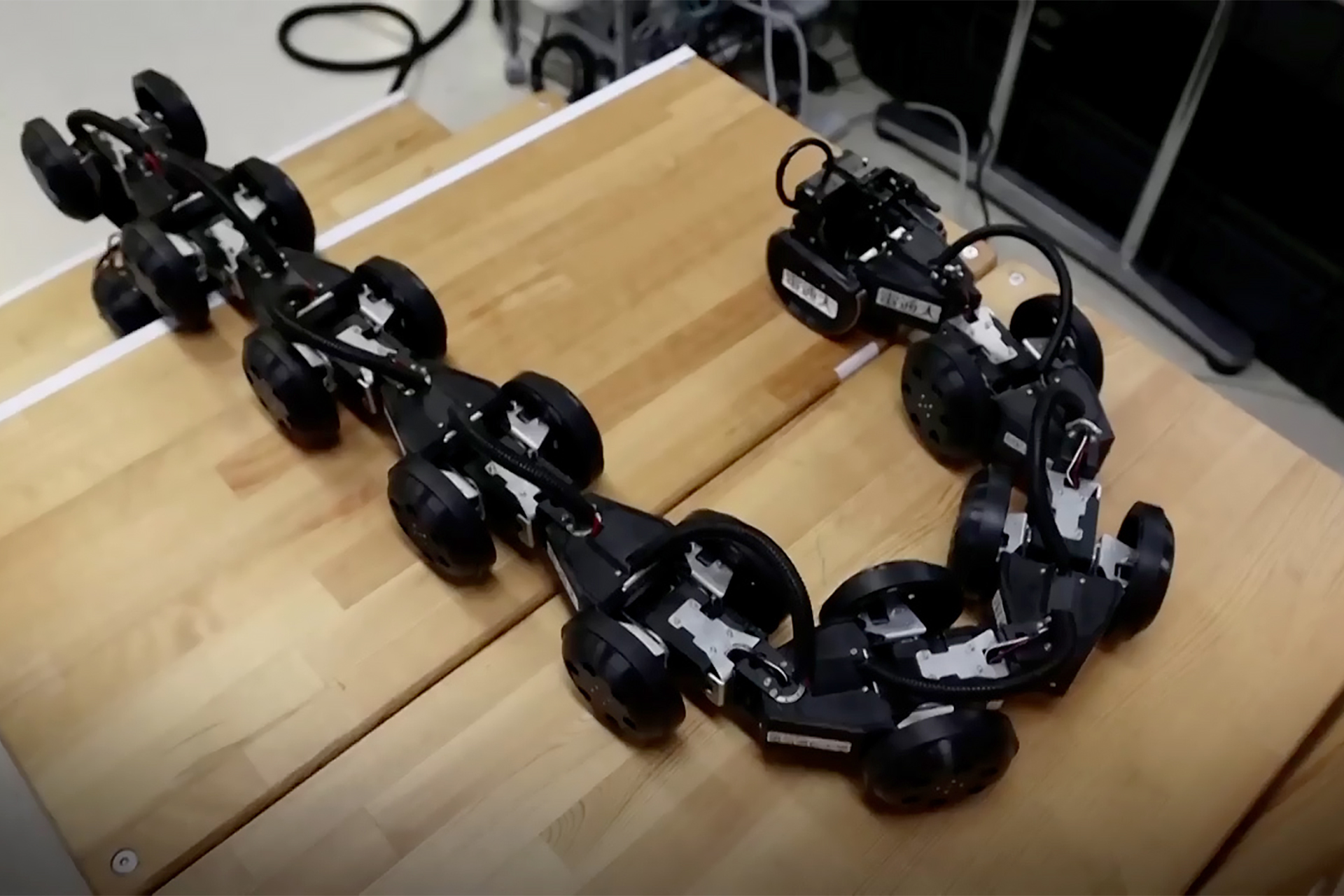Searching for survivors of earthquake disasters is one of the most difficult and complex rescue operations. Searching for people buried under tons of rubble is not easy, especially when there is fear of collapses, cracks, or even aftershocks.
Therefore, the time and accuracy factor is important, which is provided by some modern technologies related to this type of operation, some of which were used in previous disasters in the hope that other tools will appear soon to help save the victims of the Turkey and Syria earthquake that occurred last Monday.
Snake robot
Researchers led by Motoyasu Tanaka of the University of Electrical Communication in Tokyo have developed a snake-shaped robot that can climb high stairs and navigate through narrow spaces.
The 1.7-meter (5.5-foot) long "snake" has 17 joints with distance sensors, Tanaka said, by which the robot can tell if each of its wheels is on the ground or suspended in the air.
The researchers hope to use the device within 3 years, after conducting further research to improve the robot's ability to fix its position in the event of sudden movements during disaster rescue missions.
Drones to know the neighborhoods
The drone system can separate the living from the dead by detecting a slight movement of the victims' chests.
Engineers from UniSA University in South Africa and Intermediate Technical University in Baghdad designed a computer vision system that can distinguish survivors from dead bodies 4-8 meters away, using new technology to remotely monitor vital signs.
As long as the human upper body is visible, the cameras can capture subtle movements in the chest cavity, which indicate heart rate and breathing.
And unlike previous studies, the system does not depend on changes in skin color or body temperature.
Professor Javan Chahel and Dr Ali Al-Naji, the study leaders, made global headlines in 2017 when they first demonstrated that a camera on a drone could measure heart and respiratory rates.
The pulse to discover survivors
New technology from the US space agency (NASA) managed to save 4 emergency workers who were trapped under the rubble of the Nepal earthquake in 2015, by detecting their heartbeat.
The latest rescues represent the first-ever real use of advanced sensor technology developed by NASA and the Department of Homeland Security.
Two pilot units of this system were sent to Nepal in the days after the April 25 earthquake. The unit is called Personnel Search for Disaster and Emergency Response and is known as FINDER.
"As a technology developer, it was like sending a kid off to college," says Jim Luks, who manages the project at NASA's Jet Propulsion Laboratory in California.
The handbag-sized Finder unit is powered by a lithium battery and sends out low-energy microwaves. The waves can detect subtle movements, such as a slight pulsation of the skin that detects a heartbeat. These waves can travel up to 30 feet ( 9 meters) in piles of rubble or 20 feet (6 meters) in solid concrete.
One of the advantages of Finder, compared to microphones and other traditional search and rescue tools, is that the person does not have to be conscious to find it, a pulse suffices.

